In the throes of World War II, a weapon emerged from Germany’s war machine, earning a fearsome reputation from the American and Soviet soldiers alike. The Panzerfaust, a crude yet deadly anti-tank weapon, transformed the battlefield with its potent ability to penetrate armor. This article unravels the story of this humble device that armed even the least experienced German soldier with the power to destroy the mightiest tanks.
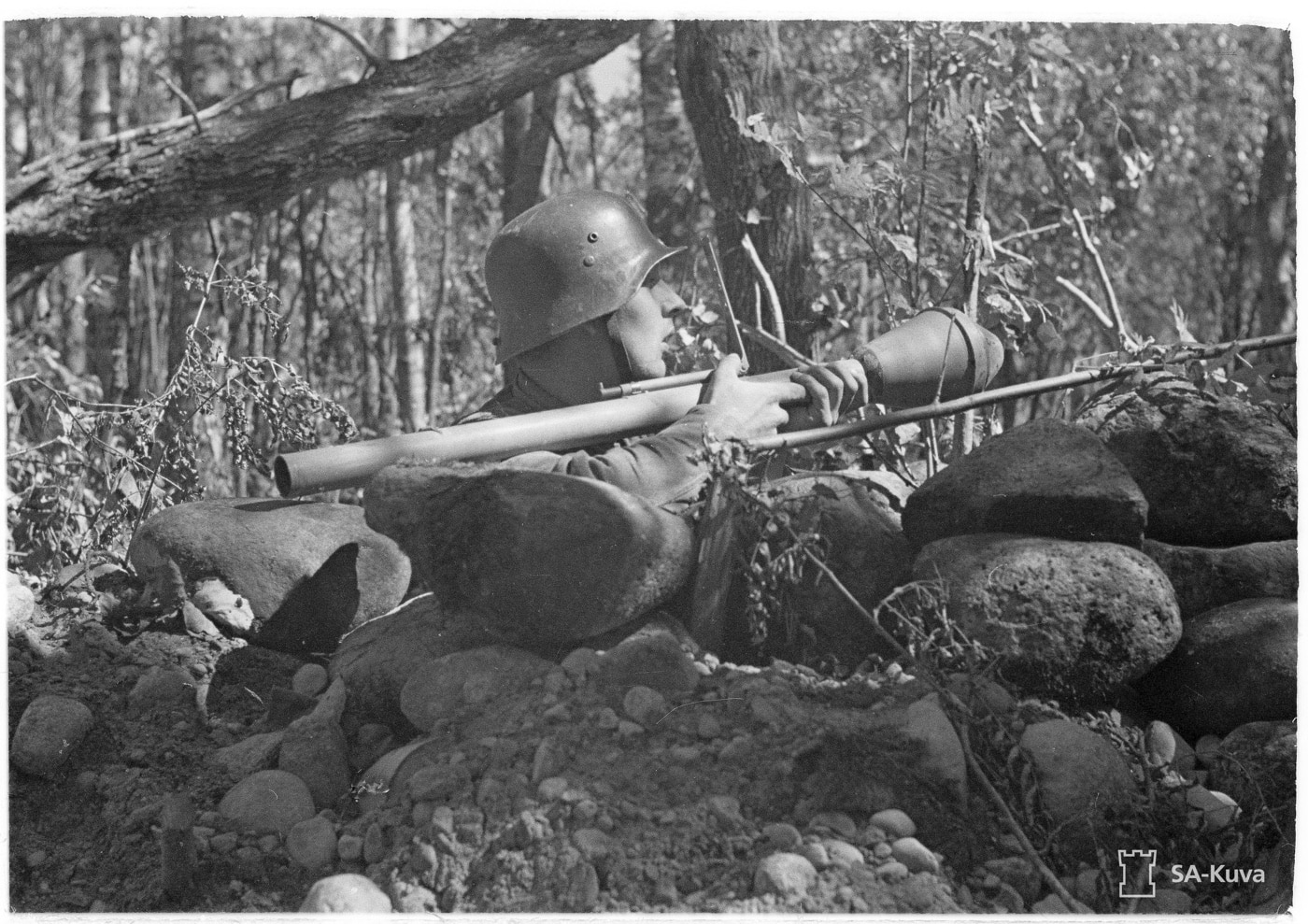
The old vet was decades out from war. He had since enjoyed a successful career in business, raised a family, and just generally made the world a much better place. Asking him to relate his experiences in Europe during World War II clearly took him back to a very different place.
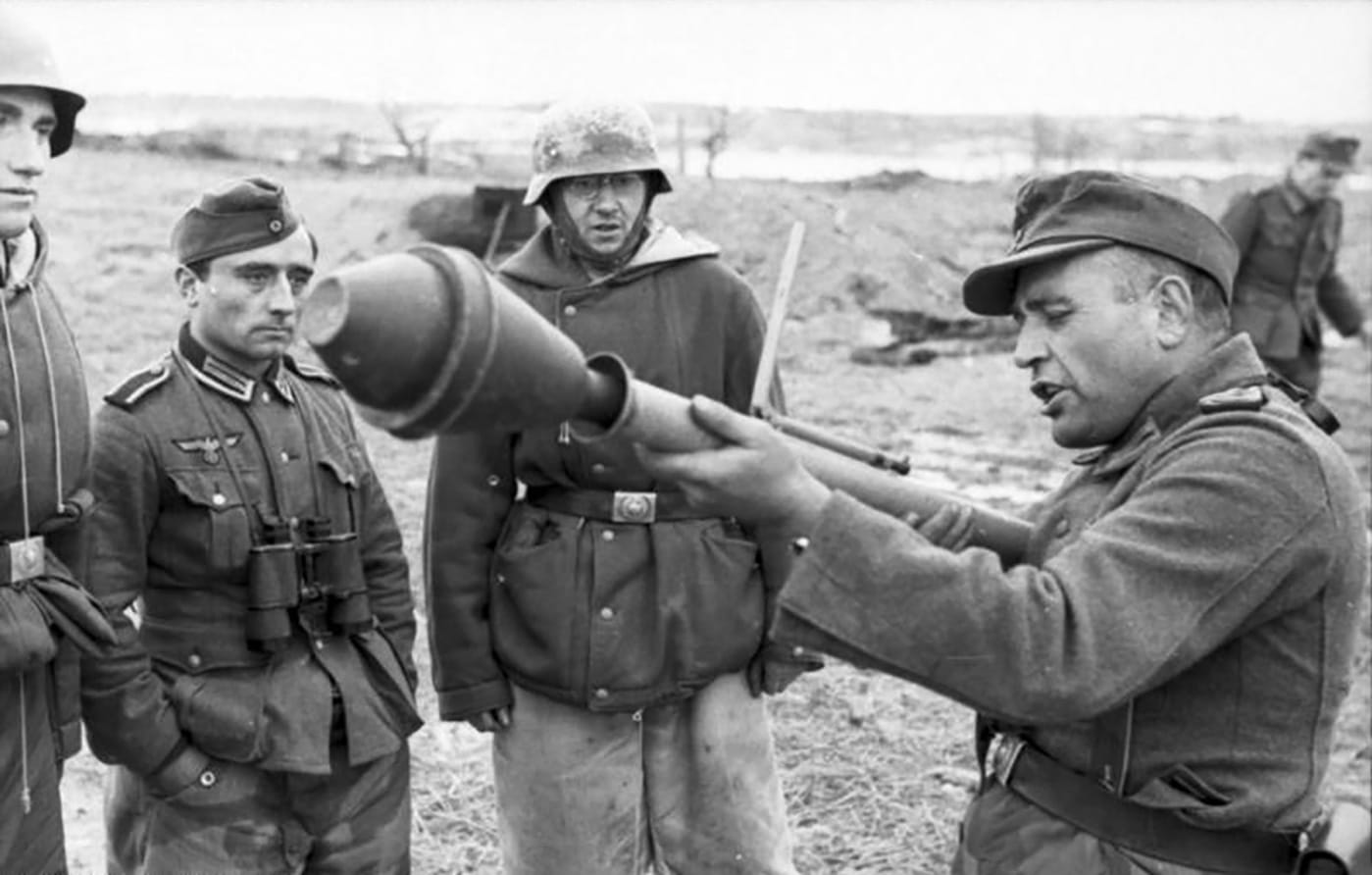
His mind remained as sharp today as it had been in 1944 when he arrived in Europe. He rendered a reasoned opinion about the effectiveness of American small arms. He respected the M1 Carbine for its modest weight and maneuverability and revered the M1 rifle. They all revered the M1 rifle.
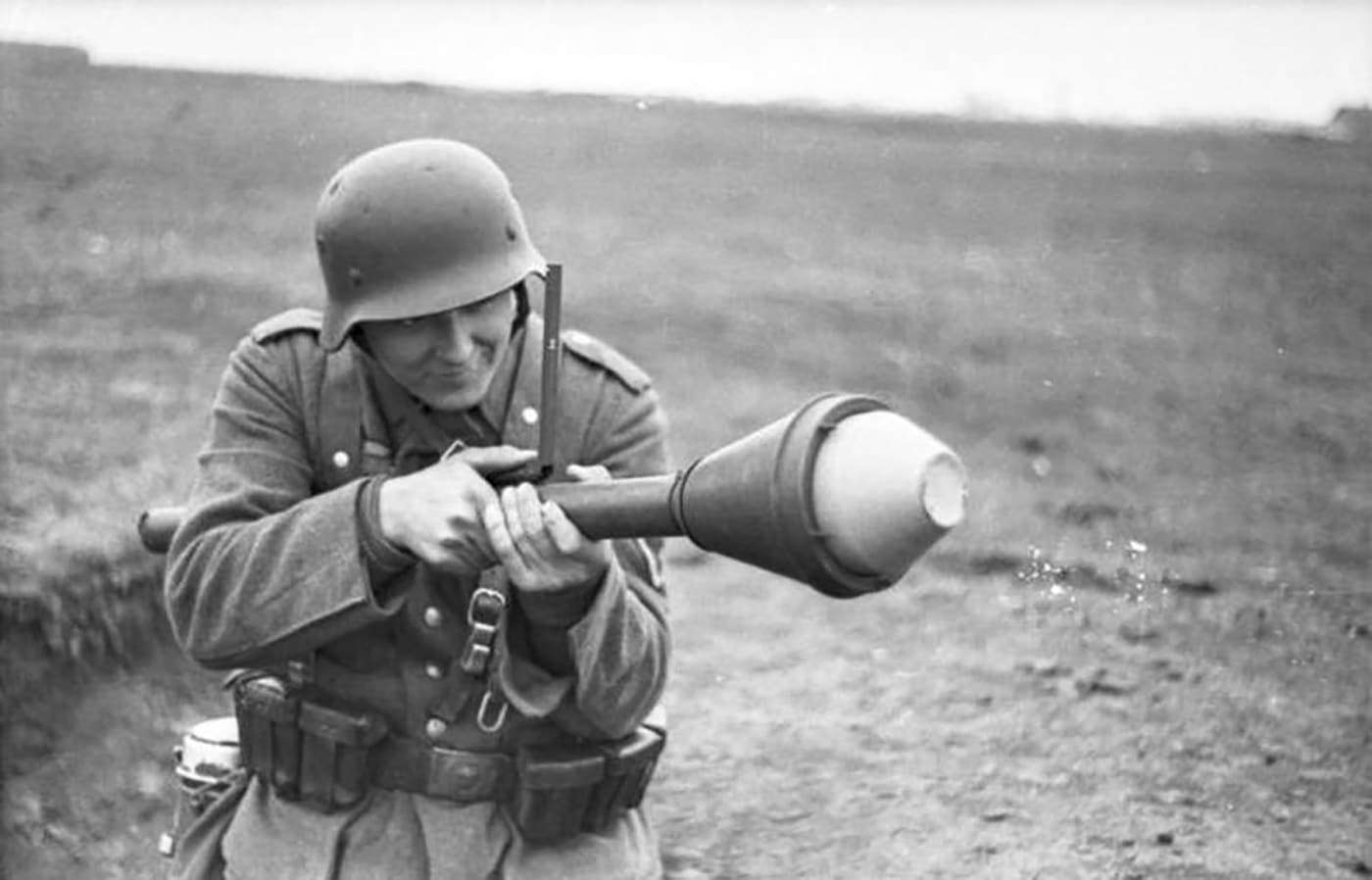
There really was only one M1. We call it the Garand, but they generally didn’t. The M1 Carbine was the carbine and the M1A1 Thompson was the Thompson, but the .30-06 semi-automatic battle rifle designed by John Cantius Garand was the only M1. What was surprising, however, was his take on the enemy weapons he faced.
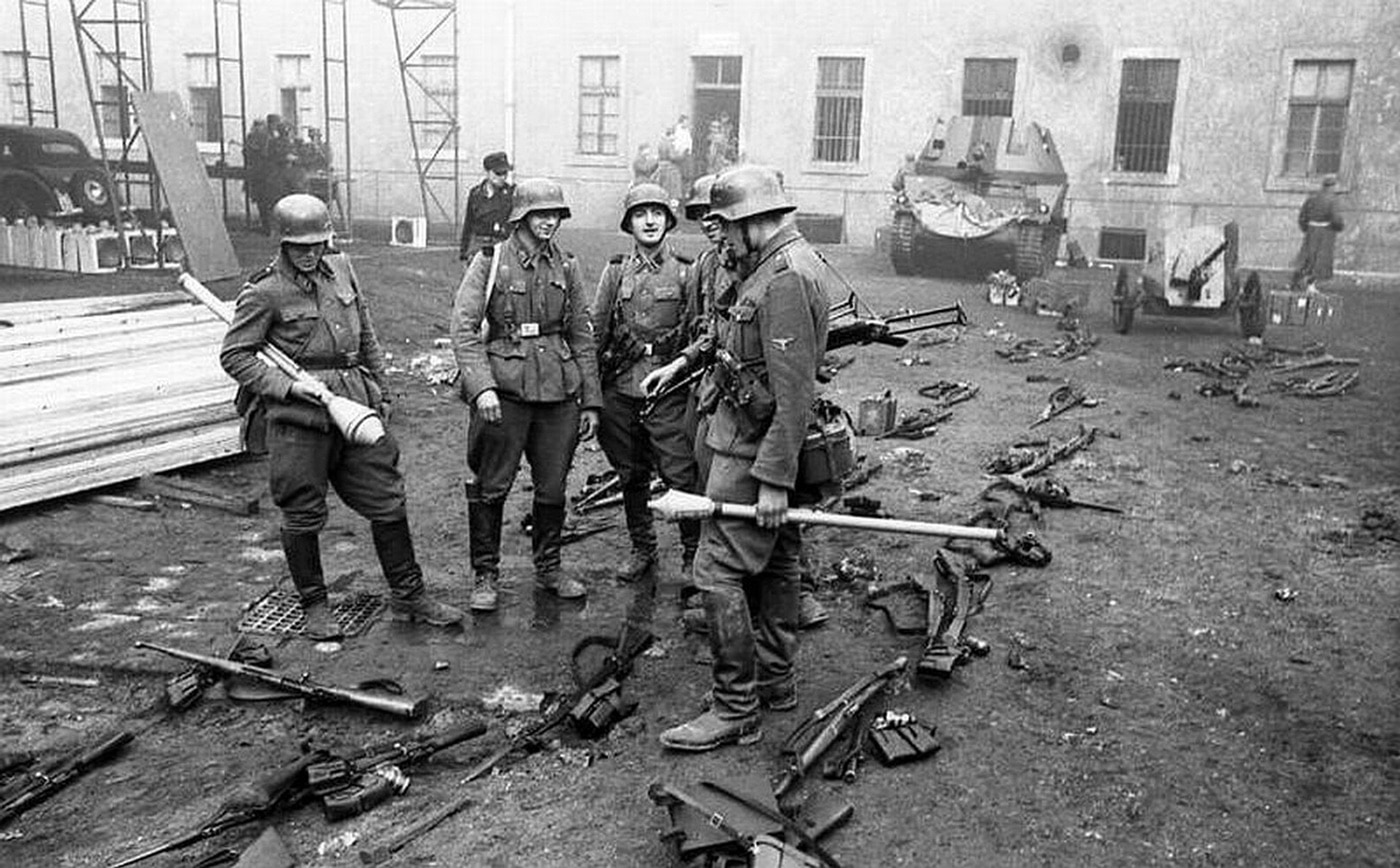
We are enamored with the StG44 and MG42 for their groundbreaking design, and rightfully so. The terrifying ripping sound that the MG42 made as it cycled at 1,200 rounds per minute got this man’s attention as well. However, the one German weapon he held in highest esteem was the Panzerfaust.
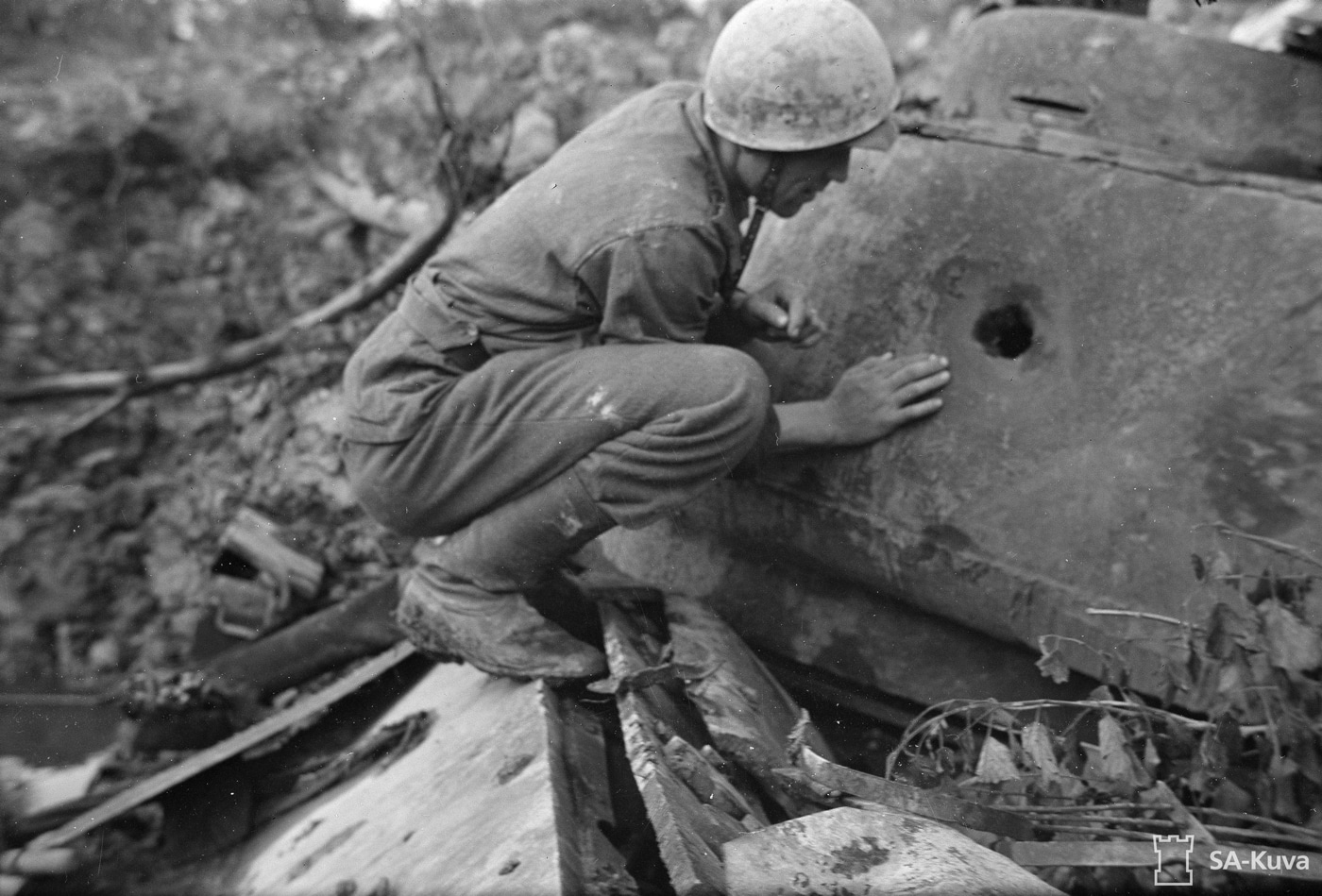
It’s tough to imagine how junky modern war is. Industrial nations pour themselves into war production and simply blanket the battlefield with weapons, ammunition, and gear. In this case this man said his unit captured German Panzerfaust antitank weapons by the unopened crate. He made a point to keep a handful of these handy little monsters in his jeep at all times.
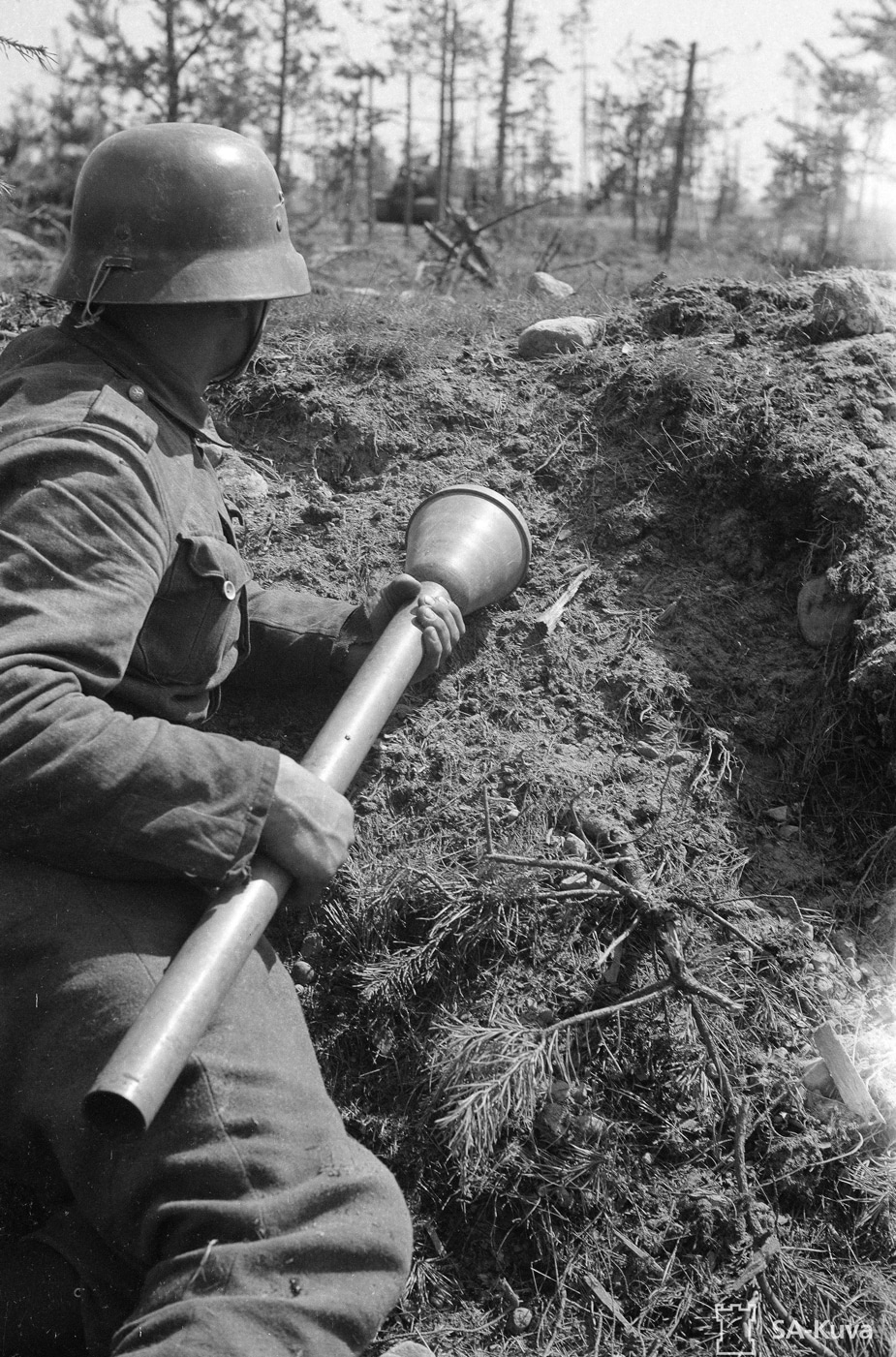
By 1945 Axis tanks were not the omnipresent scourge they had previously been, and Allied tanks, tank destroyers and fighter bombers were forever on the prowl for the big German cats. However, the Panzerfaust was just the ticket for making an unannounced entry into an occupied building. If your mission is to seize a defended structure from a determined enemy the last thing you want is to knock on the front door. This old vet said that captured Panzerfausts would reliably blow a hole through stucco or plaster that was adequate to admit grenades or even assault troops. He said they burned through dozens of the things and loved them.
Details on the Tank Fist
Panzerfaust literally translates to “tank fist,” and it was one of several desperation weapons fielded by the Germans in the closing months of World War II to blunt the Soviet juggernaut and the increasing threats on the Western Front. First developed in 1942, as Germany’s fortunes waned, the combination of low cost and ease of training made the Panzerfaust a mainstay of the final defense of the Reich in 1943 and beyond. In Normandy, the Panzerfaust accounted for 6% of the Allied tanks knocked out in combat. By war’s end, when the battlefield was dense with poorly trained Volkssturm units, that number climbed to 34%
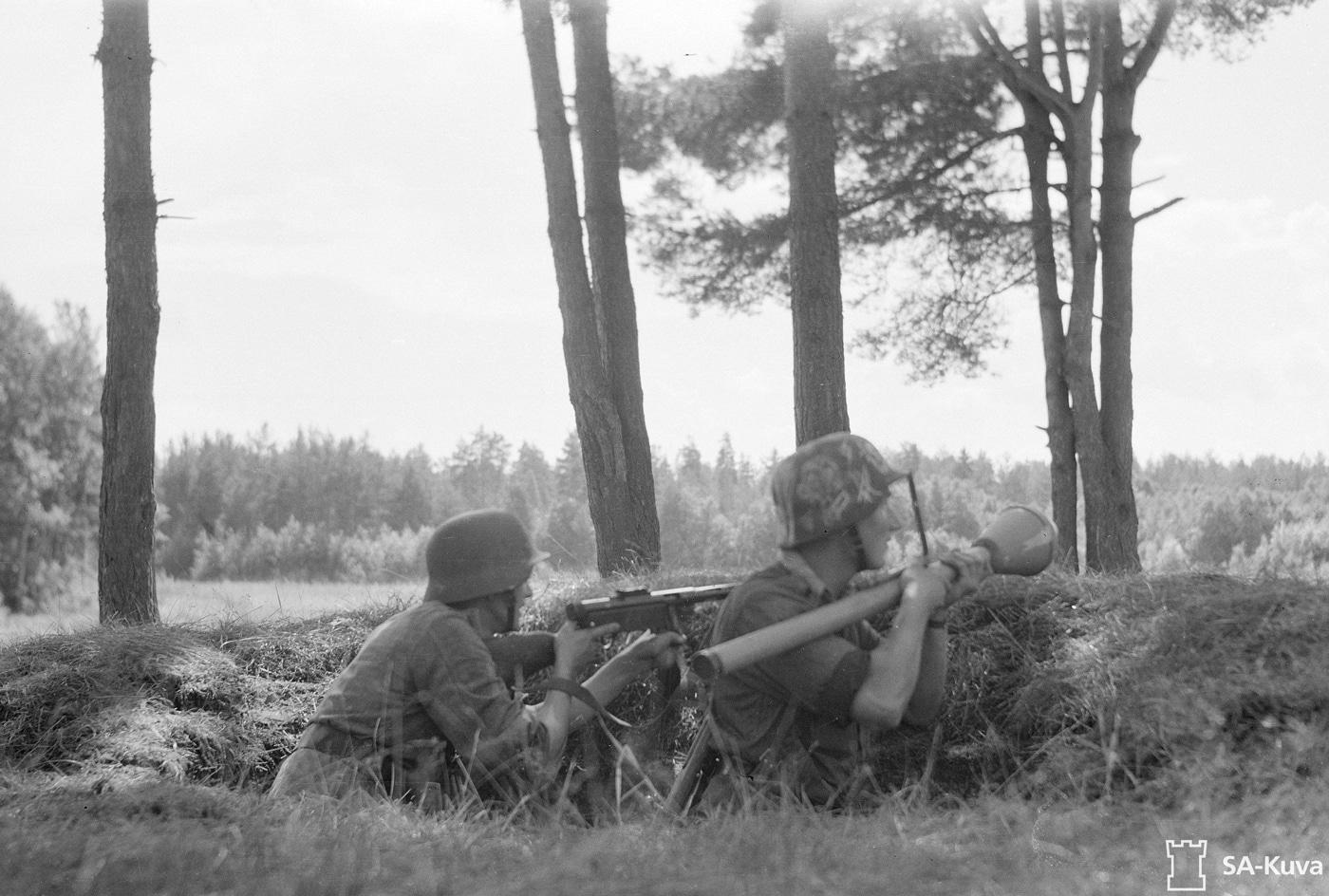
The prototype Panzerfaust was code-named Gretchen (“Little Greta”). The technical appellation was faustpatrone or “fist cartridge.” The casual observer could be forgiven for presuming the Panzerfaust was a rocket launcher. However, it was really more of a recoilless gun firing a projectile from a disposable tube. The design was a study in simplicity.
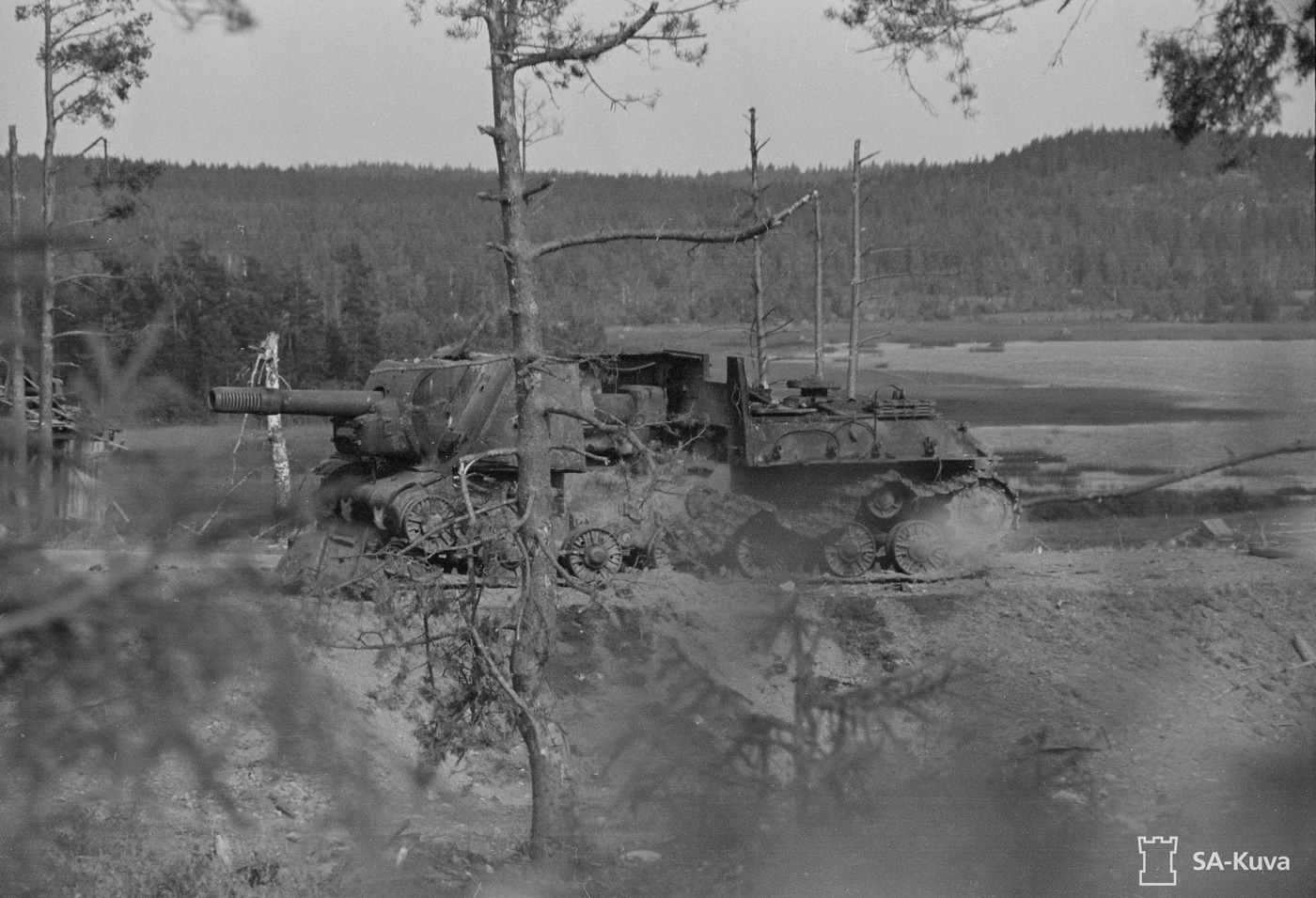
The warhead contained a shaped charge comprised of a 50/50 mix of TNT and trihexogen explosives. Fitted to the warhead was a wooden dowel adorned with folding sheet steel fins that deployed when fired. The round was shipped attached to a simple steel tube. Propellant was otherwise unremarkable blackpowder. The Panzerfaust came in four different sizes. Each variant was designated by its expected effective range.
The first model, the Panzerfaust 30, weighed 11.5 lbs. and burned 3.5 oz. of blackpowder propellant. The warhead moved at 30 meters per second and had an effective range of, you guessed it, 30 meters. The Panzerfaust 30 would burn through 200mm of steel armor, or just shy of 8”. The Panzerfaust 60 weighed 13 lbs., burned about 4.5 oz. of black powder, and traveled at 45 meters per second. The Panzerfaust 100 weighed 15 lbs., burned 7 oz. of powder, and traveled at 60 meters per second.
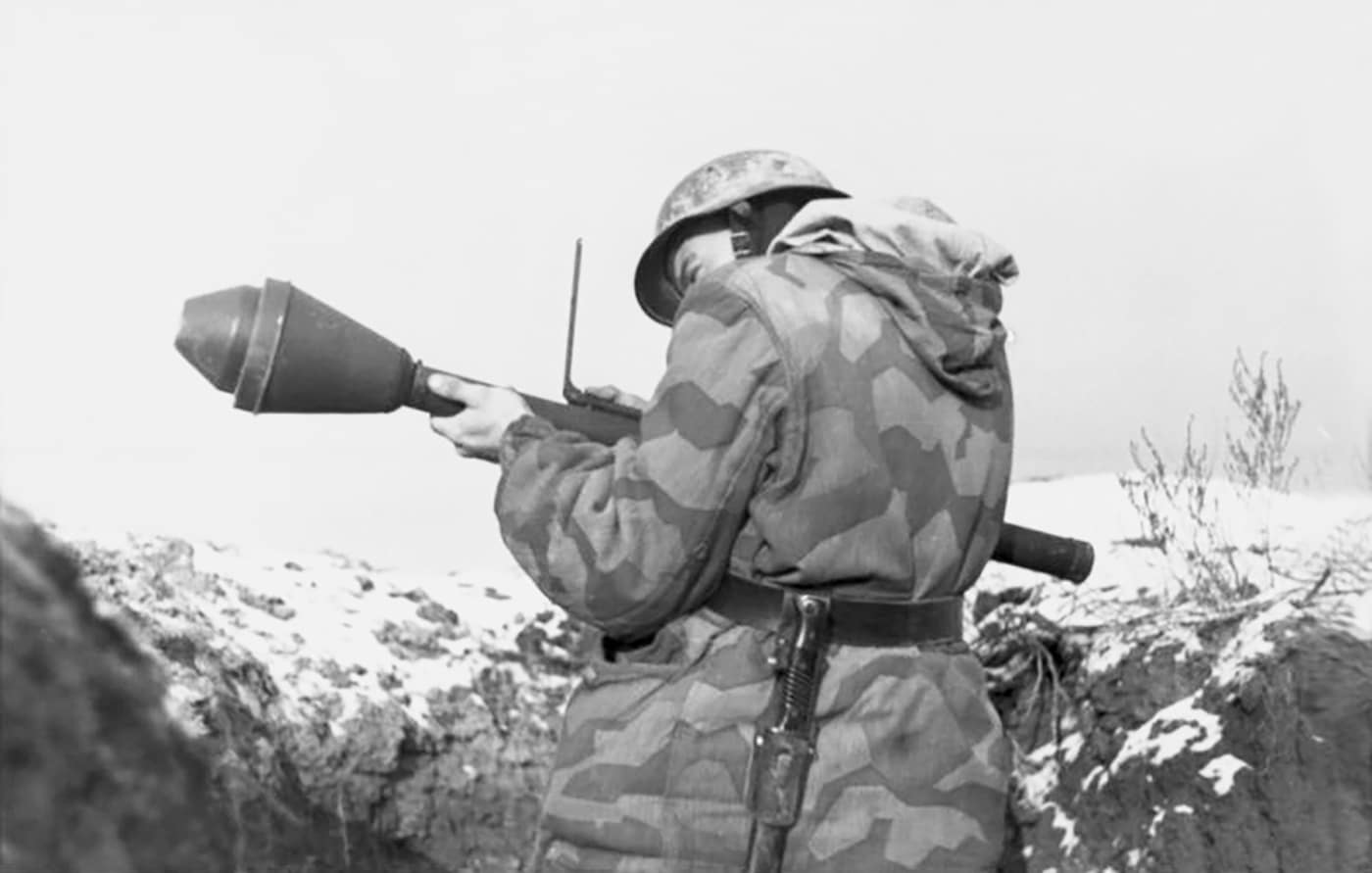
The Panzerfaust 150 sported a redesigned warhead that could accept a fragmentation sleeve to improve its anti-personnel effects when it would explode. Though 100,000 copies were produced, none were known to have been used in combat.
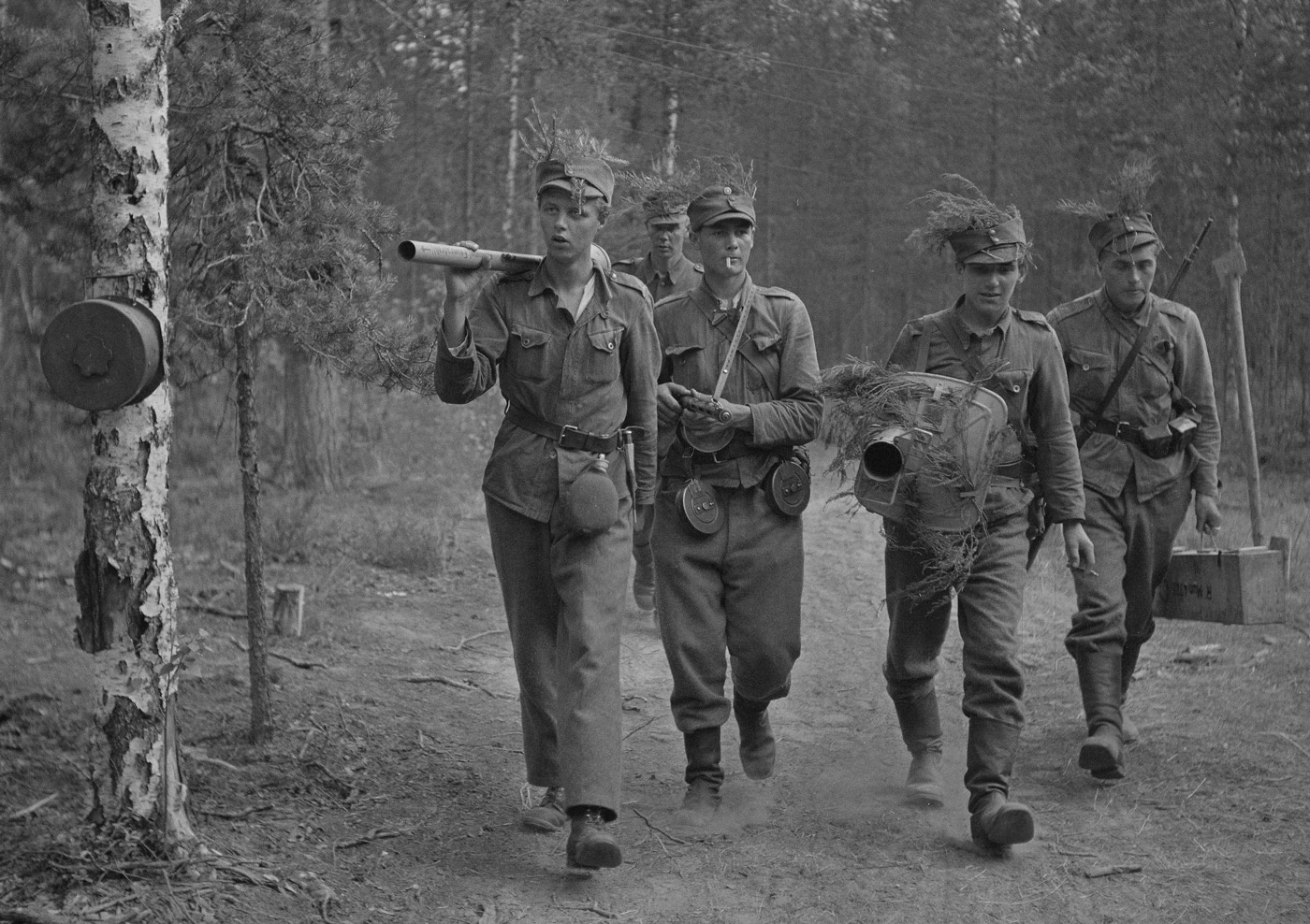
A prototype Panzerfaust 250 developed at the end of the war used a reloadable launch tube with a pistol grip but never went beyond the design stage. It is believed it could penetrate thicker armor in addition to other upgrades. This weapon served as the inspiration for the Combloc RPG-2 that was subsequently widely exported.
Firing the Panzerfaust
The Panzerfaust did not have a trigger in the classical sense. In its place was a lever just behind the warhead that was squeezed to detonate the boost charge. When the operator was ready to ignite the boost charge, he cradled the weapon underneath the armpit and used the simple pressed steel sight to align the warhead.
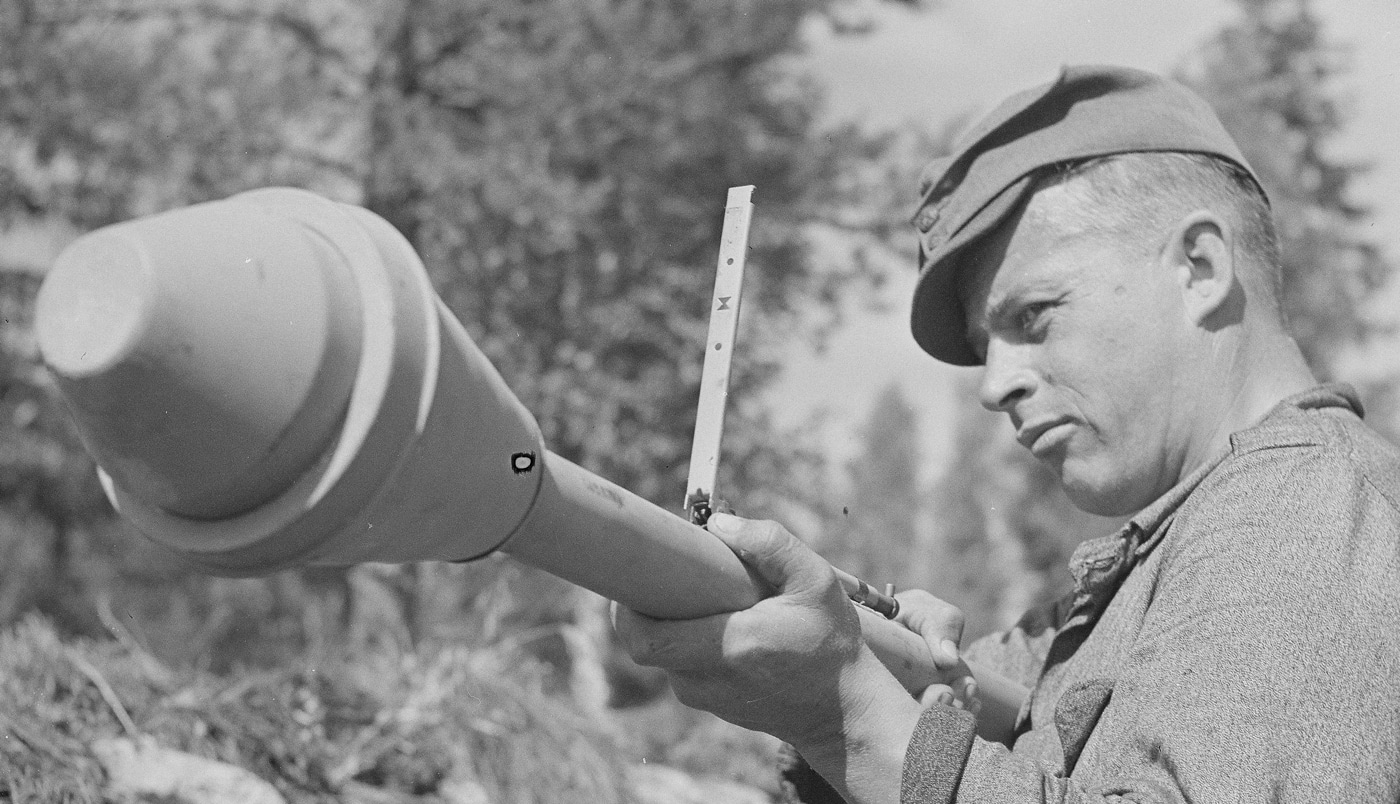
The Panzerfaust 100 had holes punched into the folding sight marked 30, 60, 80 and 150 meters along with luminescent paint to make the launcher easier to use at night. Most launcher tubes had the words “Achtung. Feuerstrahl.” printed on the side which translated to “Beware. Fire jet.” The backblast that came out of the rear end of the tube was considered dangerous out to about two meters.
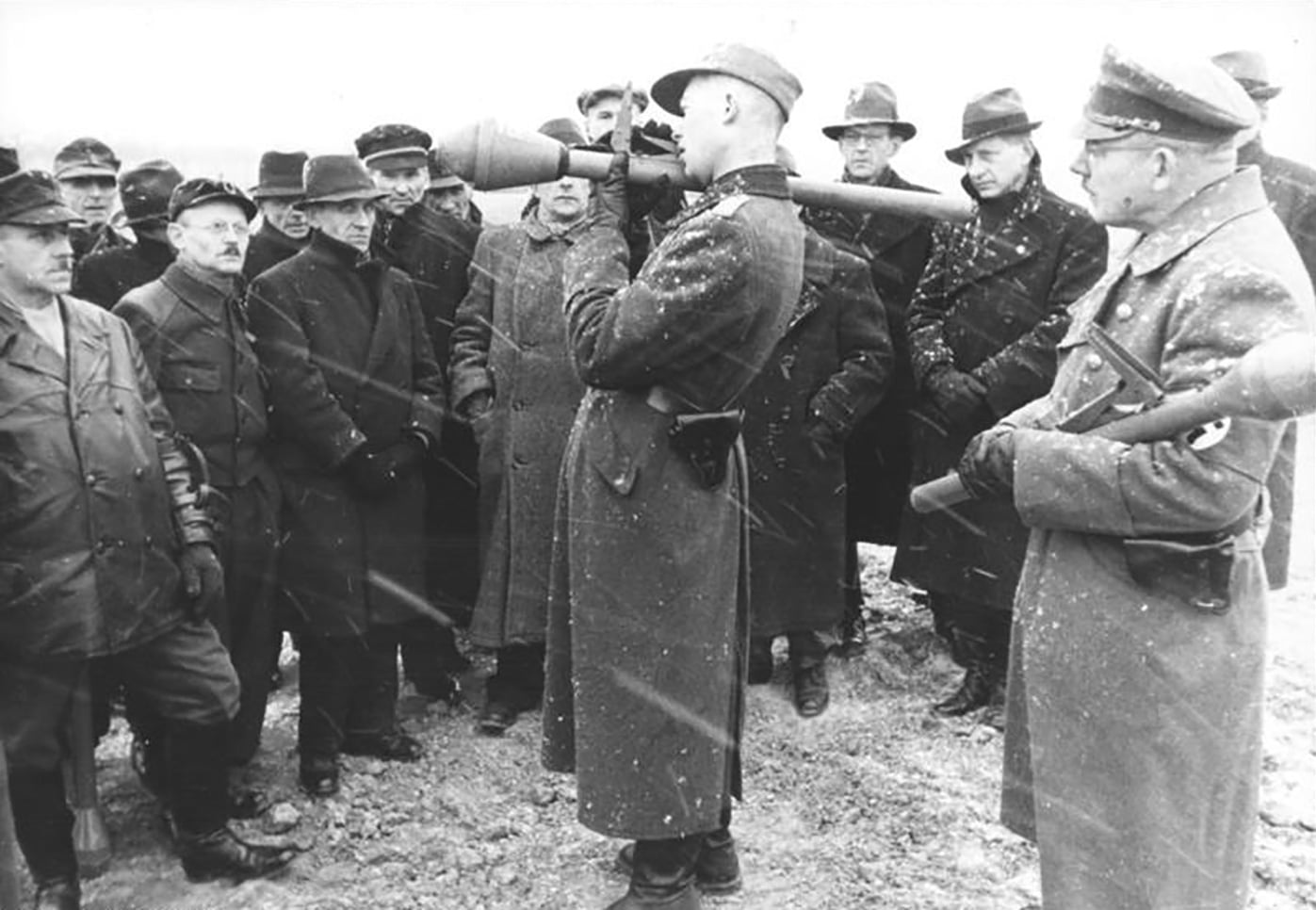
Though I’ve never had the pleasure, I’ve read that firing the Panzerfaust in combat was a serious gut check. The thing was fairly imprecise on a good day, and the huge plume of white smoke produced by the propellant charge invariably attracted a crowd. It took some proper stones to get within 30 meters of an enemy tank screened by infantry and touch one of these puppies off. However, the warhead was undeniably effective when it did connect.
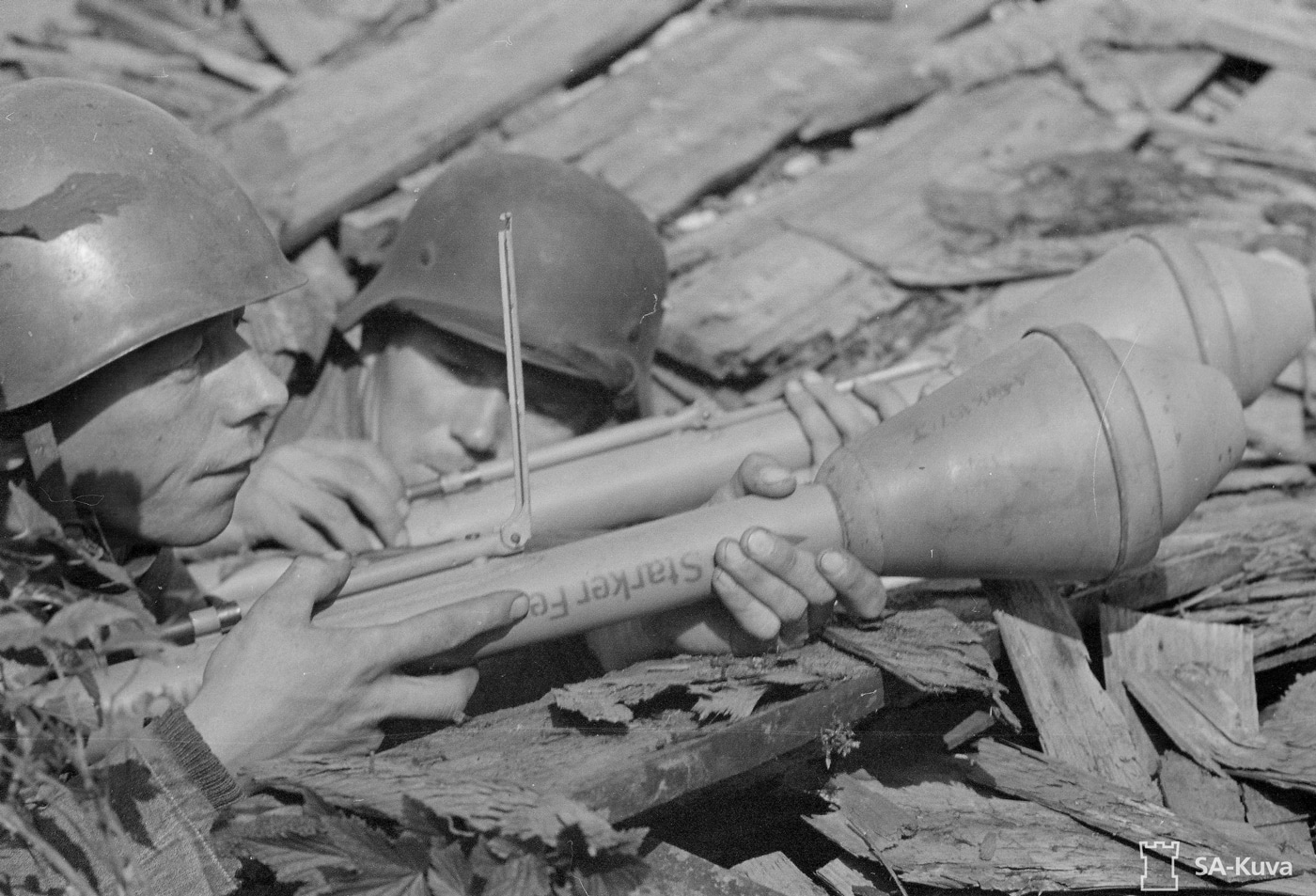
Despite the crudeness of the design, the beyond-armor effects of the Panzerfaust, particularly in its later versions, was undeniably impressive. Where the American 2.75” bazooka typically punched a roughly half-inch hole in armor plate, that of the later Panzerfausts was about five times that diameter. Subsequent spalling and incendiary effects were distressingly horrible. I once met an old vet in the VA who had lost a Sherman to a Panzerfaust. He had great respect for them.
Panzerfaust Legacy
The Panzerfaust was the classic desperation weapon. Churned out in vast quantities in a vain effort to slow the inexorable Allied tide toward the end of World War II, the Panzerfaust was not important so much for what it was as for what it became. Yes, it did stop many a Soviet tank and caused more than a little concern for Allied tank crews. The German antitank weapon caused many crews to improvise supplemental tank armor in the field: from sandbags to welded iron and steel additions.
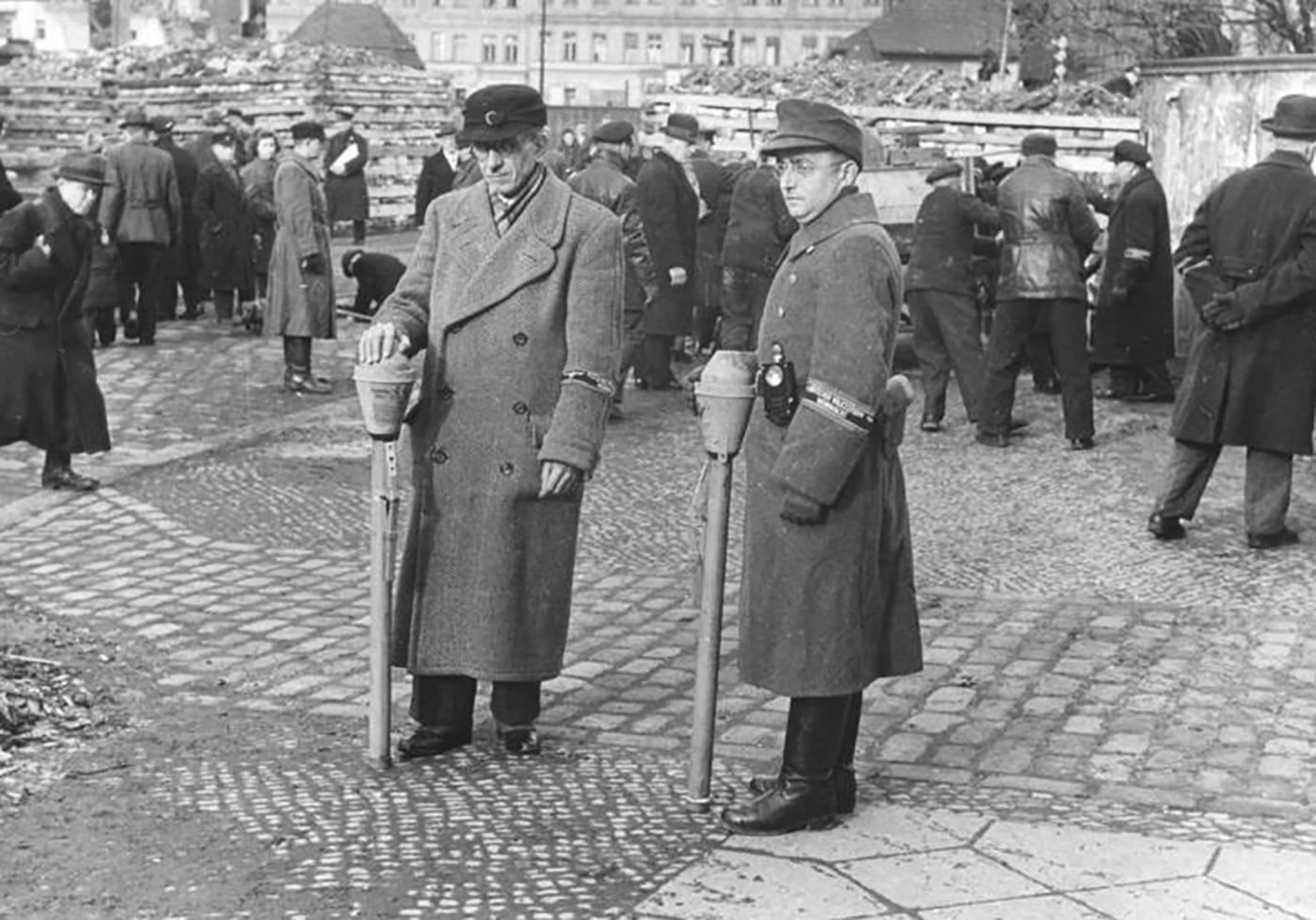
The technology spawned by the German infantry weapon inspired the M72 LAW, the AT4, and the infamous RPG-7 AT weapons developed after the Second World War. In so doing, the Panzerfaust changed the face of modern war.